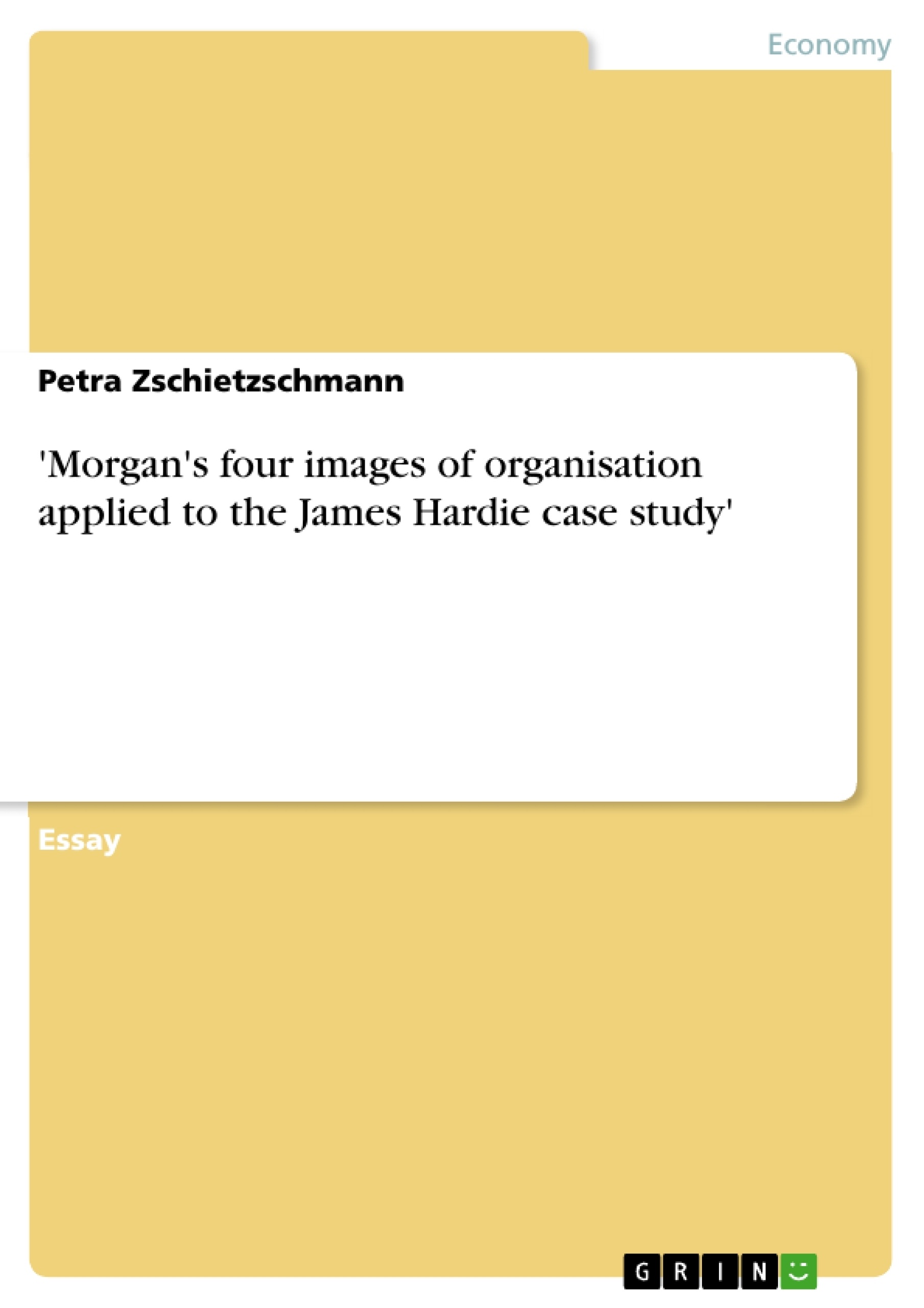pply any two of Morgan’s (1986) four images of organisation to the James Hardie case study. How useful are the two images that you have selected for explaining action and behaviour within organisations? Are there any deficiencies in the two images that you have selected? Explain the deficiencies you identify by indicating what the two images you have selected fail to take into account or explain about organisations.
Table of Contents
- Organisations as Cultures
- Organisations as Cultures: The James Hardie Case
- The Usefulness of the Cultural Image
- Deficiencies in the Cultural Image
- Organisations as Political Systems
- Organisations as Political Systems: The James Hardie Case
- The Usefulness of the Political Systems Image
- Deficiencies in the Political Systems Image
Objectives and Key Themes
This essay aims to explore the applicability of two of Gareth Morgan's (1986) "images of organization" - cultures and political systems - to the James Hardie case study. The essay examines the usefulness of these images in explaining organizational action and behavior, as well as their limitations. It analyzes the specific features of the chosen images and how they contribute to understanding the company's actions and the reactions of its stakeholders.
- The application of Morgan's images of organization, specifically cultures and political systems, to the James Hardie case.
- The strengths and limitations of each chosen image in explaining organizational action and behavior.
- The impact of organizational culture and political dynamics on the company's decisions and stakeholder relationships.
- The role of conflict and consensus in shaping organizational behavior.
- The importance of understanding the complexities of organizational dynamics.
Chapter Summaries
The essay begins by introducing the concept of organizational cultures, emphasizing the shared meanings and beliefs that distinguish one organization from another. It then explores how this image applies to the James Hardie case, examining the company's past culture of success and its subsequent transformation. The essay highlights the limitations of the cultural image, particularly its inability to account for competitive dynamics and change within an organization.
The essay then delves into the image of organizations as political systems, emphasizing the role of power, interests, and conflict within organizational contexts. It demonstrates how the James Hardie case exemplifies the political dynamics involved in decision-making, stakeholder engagement, and strategic maneuvering. The essay concludes by discussing the limitations of the political systems image, including its difficulty in predicting the outcomes of strategic decisions.
Keywords
The essay focuses on key concepts such as organizational culture, political systems, stakeholder relationships, conflict, consensus, strategic decision-making, and the James Hardie case study. It explores the applicability of Gareth Morgan's images of organization to understand the complexities of organizational behavior and dynamics. It also examines the role of power, interests, and values in shaping organizational action and the implications of these dynamics for stakeholders.
- Quote paper
- Petra Zschietzschmann (Author), 2004, 'Morgan's four images of organisation applied to the James Hardie case study', Munich, GRIN Verlag, https://www.grin.com/document/54130




